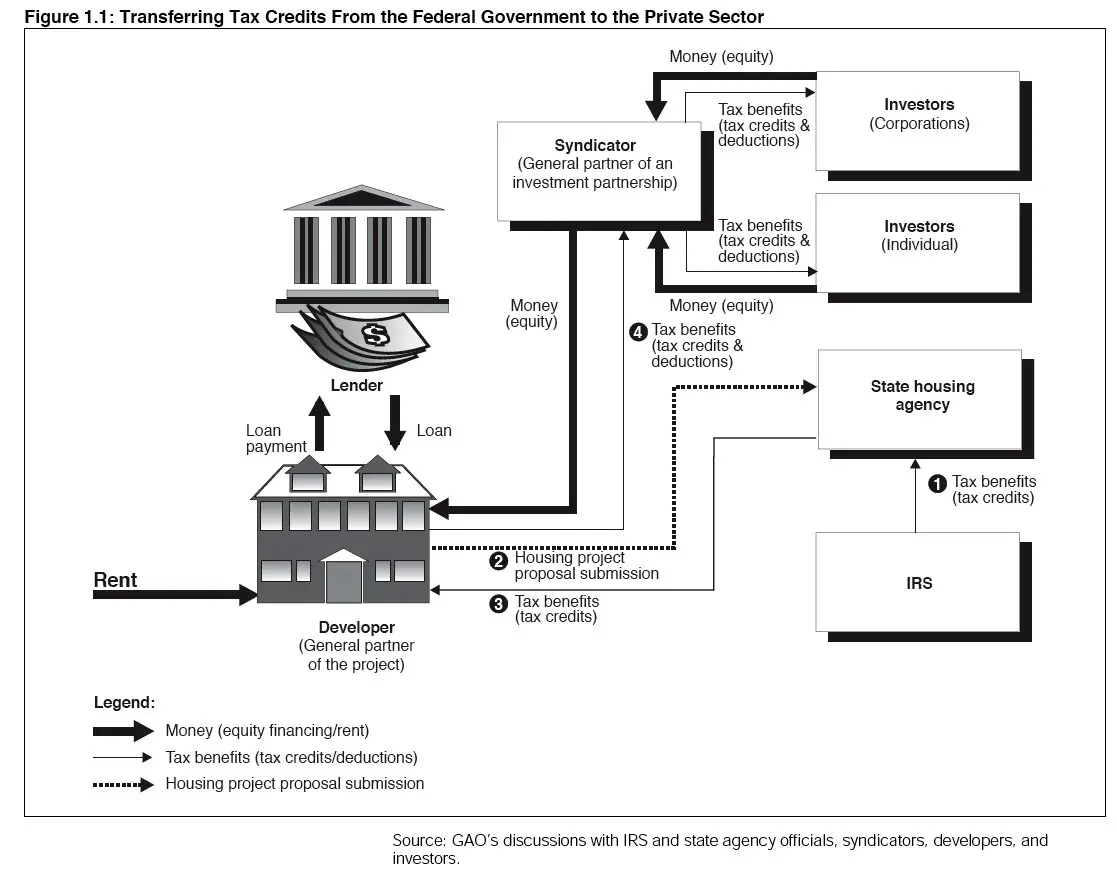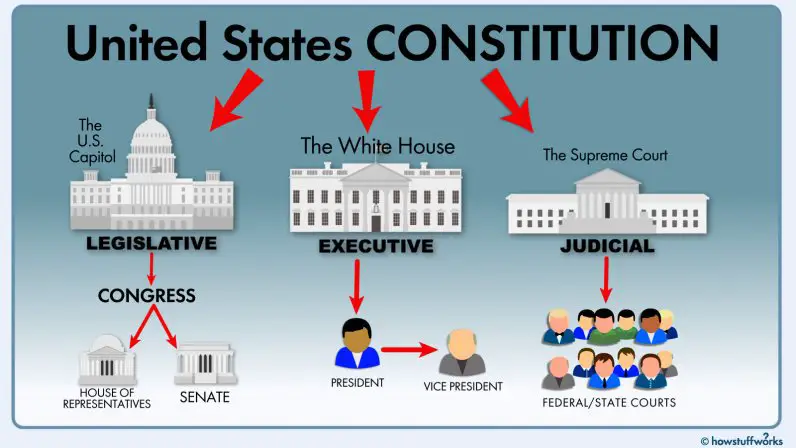What Is The Low
The LIHTC gives real estate investors and developers an incentive to build or renovate buildings to increase the amount of affordable housing for low-income Americans. The program was created by federal law in 1986 , and its administered by the IRS. You may see an LIHTC credit called a Section 42 tax credit because its based on Section 42 of the federal tax law. According to the Urban Institute, the process for allocating tax credits competitively is guided by federal regulation, uses federal dollars, and is controlled by states.
Inclusionary Affordable Housing Program
Inclusionary zoning ordinances require housing developers to reserve a percentage between 10 and 30% of housing units from new or rehabilitated projects to be rented or sold at a below market rate for low and moderate-income households. According to United States Department of Housing and Urban Development ,market-rate projects help to develop diverse communities, and ensure access to similar community services and amenities regardless of socioeconomic status. Mostinclusionary zoning is enacted at the municipal or county level. For example, San Francisco’s Planning Code Section 415 “requires residential projects of 10 or more units to pay an Affordable Housing Fee, or to provide a percentage of units as affordable “on-site” within the project or “off-site” at another location in the city .”
Housing vouchers, now one of the primary methods of subsidized housing delivery in the United States, became a robust program in the United States with passage of the 1974 Housing and Community Development Act. The program, colloquially known as Section 8, currently assists more than 1.4 million households. Through the voucher system, direct-to-landlord payments assist eligible households in covering the gap between market rents and 30% of the household’s income.
Who Receives Housing Assistance
There are certain requirements that must be met in order to receive any form of housing assistance. The person needing this assistance will contact his or her local PHA to apply. Typically, in order to qualify for housing assistance, the recipient’s household income must be less than 50 percent of the median income in that particular area. The applicant must provide his or her previous rental history, the names and salary information of each person residing with him/her, present address and employment information as well as the reason he or she is requesting assistance. Once this information is confirmed, the applicant is eligible to receive housing assistance. Unfortunately, most areas have long waiting lists for housing assistance. This means that applicants will more than likely have to wait for the funds to become available. Although each area differs, it can often take a year or more for an individual’s name to reach the top of the waiting list. Priority is usually given to those applicants who have urgent needs due to homelessness, domestic abuse, etc.
Don’t Miss: Government Programs To Help Homeowners Avoid Foreclosure
Cmhc Affordable Housing Centre
Our team of affordable housing experts helps you build or preserve affordable housing. We provide personalized support, including local expertise and networking opportunities and financial assistance. We understand community needs, and work with partners to offer clients solutions for local housing challenges.
Through our Affordable Housing Centre, we provide a hub of resources to help facilitate the creation of new affordable housing or preserve existing affordable housing. Groups in the public, private and non-profit sectors rely on the Centre for affordable housing knowledge and expertise. We offer many interactive tools, as well as Canadas largest inventory of housing information, research and market analyses.
We provide contributions and interest-free loans to qualifying projects through our Seed Funding program. This support helps with the up-front costs of a new affordable housing project or with preserving existing affordable housing.
What Is Public Housing

Public housing is housing owned and run by a government body such as a local Housing Authority. To be eligible to live in public housing, you must have low income and meet certain other requirements. Your rent and utilities are generally lower than in private housing. In most cases, rent in public housing will be no more than 30 percent of your adjusted gross income.
Don’t Miss: City Of Las Vegas Government Jobs
Get Personalized Help With Your Search
Find a HUD-approved housing counselor in your area online or call to find a local housing counseling agency Housing Counseling Agency: an organization with experts who provide advice on buying a home, renting, avoiding mortgage default and foreclosure, and credit issues.. The counselor may be from a non-profit organization approved to offer advice on housing assistance.
Upgrading Of Informal Settlements Programme
This programme tries to provide running water, sanitation, electricity and roads to informal settlements, but not necessarily houses. If your informal settlement receives UISP funding, you can later apply for housing construction assistance through other programmes.
To qualify for a UISP, you must meet all the National Housing Subsidy Scheme criteria , but also people who meet the following criteria can apply:
-
Household with income of more than R3,500 per month
-
People without dependents
-
People who used to own property
The following peoples applications will be considered on a case-by-case basis:
-
Undocumented immigrants
-
People who have previously received housing assistance and who previously owned and/or currently own a residential property
You cannot apply for UISP. Municipalities identify informal settlements in their area that need upgrades and then apply to their provincial departments MEC for funding. After funding has been set aside, your community will be invited to come to planning meetings to determine the needs of your community.
Caution: This can be a difficult process. A lot of municipalities prefer to relocate entire informal settlements instead of upgrading it because getting engineering services into overcrowded informal settlements can be difficult.
Put pressure on your ward councillors and municipal officials to ensure that the budget for UISP is used for upgrading your settlement.
Read Also: Government Grants To Start Trucking Business
Differences Between Public And Subsidized Housing
Different housing programs have different features. While they all help make your rent more affordable, it is important to understand the features of each program so that you can apply to the ones that are best suited to your family. If you have questions about a housing program, talk to your local housing authority or local community action program. Here are some things to know:
The Irs Has Lihtc Forms To Fill Out
- Form 8586 is used to claim the credit on the companys tax return.
- Form 8609 is used to obtain a housing credit allocation for a building.
- Form 8609-A is an annual report showing compliance with the requirements.
You may see these forms described on a search page, but they are not for individuals who want to apply for a low-income housing tax credit. The real estate development companys tax professionals must complete these forms.
Recommended Reading: City Of Las Vegas Government Jobs
What Is Section 8 And How Does It Work
The Section 8 Housing Choice Voucher program is a form of government rent assistance. In 2018, upwards of 5 million people across the country lived in a household that used a voucher to help pay some or all of their rent.
When Congress established Section 8 of the Housing and Community Development Act in 1974, one of the goals was to make sure people earning low wages could find decent housing and a suitable living environment outside of public housing units.
Today, people who meet income requirements can apply to the program to receive a voucher when they become available. If they are approved, selected and then find an apartment or house with the voucher, their local housing authority starts sending payments directly to landlords.
The payments cover some or all of the voucher holders rent. On average, each household will pay somewhere between 30% and 40% of its income on rent.
Qualifying For The Credit
Many types of rental properties are LIHTC eligible, including apartment buildings, single-family dwellings, townhouses, and duplexes.
Owners or developers of projects receiving the LIHTC agree to meet an income test for tenants and a gross rent test. There are three ways to meet the income test:
The gross rent test requires that rents do not exceed 30 percent of either 50 or 60 percent of AMI, depending upon the share of tax credit rental units in the project. All LIHTC projects must comply with the income and rent tests for 15 years or credits are recaptured. In addition, an extended compliance period is generally imposed.
You May Like: Government Jobs In Las Vegas
How Does The Federal Government Support Housing For Low
The federal government spent $51 billion on housing assistance in 2019, and more than 80 percent of that spending was for three programs in the Department of Housing and Urban Development that provide rental assistance to low-income households. At a total cost of $41 billion, those three programs represent a relatively small portion of total federal spending slightly less than 1 percent but provide assistance to 4.4 million households. Here are some details on those three programs and the individuals that are served by them.
The three largest rental assistance programs operated by the federal government are:
Aside from the three programs above, the federal government spent an additional $9 billion on smaller housing assistance programs in 2019. Those programs include Supportive Housing for the Elderly, Supportive Housing for Persons with Disabilities, and Rural Rental Assistance.
What Is Subsidized Housing

Housing is subsidized when the government pays part of the tenant’s rent or mortgage. To get subsidized housing, you must have a low or moderate income. Under the HUD Section 8 Program and the Rural Economic and Community Development Rental Assistance Program, part of the rent of qualifying lower income people is paid by the government.
Under these programs, tenants usually pay no more than 40 percent of their adjusted gross income. There are two distinct programs-tenant-based section 8 vouchers and project-based section 8 vouchers. Unfortunately, the number of people needing these two programs is far greater than federal funding for the programs.
In rural areas, there are additional housing opportunities for lower income persons. As a rural resident you may qualify for very low interest rate mortgages to purchase or repair a home. Contact your local county housing authority for further information.
Recommended Reading: Government Bank Owned Foreclosed Homes In Polk County
Principles Of Housing First
Where You Can Live
If you get a voucher, you can use it anywhere in the state if it is a Section 8 voucher, you can use it outside of the state. If you get into public housing, you must live in the community where you applied. If you get into multifamily subsidized housing, you must live in the development where you applied.
If you have a voucher and want to move, you can take your voucher with you. If you move from public housing or multifamily subsidized housing, you cannot take your subsidy with you.
Recommended Reading: How To Get A Grant To Start A Trucking Business
Seniors Housing Programs From Canadian Provinces And Territories
Seniors housing costs and programs vary by province and territory. If you’re a senior with a low income, see if your province or territory has any programs to help you get affordable housing.
Find out about programs by contacting your provincial or territorial housing office or looking at the following links.
Subsidized Housing How It Works
As you begin your search for suitable, affordable housing youll want to understand a little bit about federal and state housing programs and how they work.
Public housing was established to provide decent and safe rental housing for eligible low-income families, the elderly, and persons with disabilities. Public housing comes in all sizes and types, from scattered single-family houses to high-rise apartments for elderly families. The U.S. Department of Housing and Urban Development administers Federal aid to local housing authorities that manage the housing for low-income residents at rents they can afford. HUD furnishes technical and professional assistance in planning, developing and managing these developments.
Read Also: Government Grants For Dental Implants
Types Of Rent Supplement Benefits
Rent Assistance Benefit
The Rent Assistance Benefit is now open.
The Rent Assistance Benefit is a long-term benefit available to subsidize the rent for Albertans with low income.
Benefit features:
Private Landlord Rent Supplement
The Private Landlord Rent Supplement is not reopening. Current recipients will be transitioned to the Rent Assistance Benefit as funding agreements for those units expire.
Find Affordable Rental Housing
People with low income Low Income: a total family income thats no more than the Section 8 low-income limit established by HUD. Individuals are considered one-person families., seniors Senior: for housing benefit eligibility purposes, a person who is 62 or older., and people with disabilities Person with a Disability: a person whose physical or mental impairment substantially limits one or more major life activities, such as eating or walking. may qualify for help from the U.S. Department of Housing and Urban Development to get affordable rental housing. HUD doesn’t own rental property. It gives money to states and building owners, who in turn provide low-income housing opportunities.
You May Like: Entry Level Government Jobs Colorado
Average Cost Of Seniors Residences
The average rent for bachelor units and private rooms that include at least one meal is on average $2,210 per month. Cost of seniors’ residences varies across Canada.
Find out about the cost of seniors housing in your province or territory in the Canadian Mortgage and Housing Corporations Seniors housing reports.
S To Take While Youre On A Section 8 Waitlist:

Lawyers and former housing authority workers say that being on the waitlist doesnt mean you should just wait until you hear something. They shared a couple of important tips:
- Take notes and photos. Keep a written record of all your communication with the housing authority. You can use your phone to take pictures of documents, emails you send or notes you take while having a phone call. Record keeping is important because there is a lot of staff turnover within housing authorities, lawyers and former employees told us.
- Keep in touch. Respond to any notices you get in the mail from the housing authority over phone, email or mail so the housing authority knows youre still interested in staying on the waitlist.
- Keep applying. As soon as new waitlists in your state open up, apply. Dont wait!
- Join communities online. Join Section 8 groups on social media platforms. Tens of thousands of people are in the same position you are, and they have created social networks to support and help one another. Here are some of the more popular nationwide Facebook groups: Public Housing HUD Tenants Group and Housing Choice Voucher Friends.
- Be patient. It can take months or years to get approved depending on demand. Dont give up!
- Keep everyone updated. Communicate with the housing authority if there are any changes in where you live, how much money you or someone in your household is making or how many people are in your household .
Recommended Reading: Grants To Start A Trucking Business
Design And Technical Guidelines
The Design and Technical Guidelines outline the minimum standards required when developing provincially-funded housing in Alberta.
The guidelines provide design principles and technical specifications for the construction of affordable housing. They provide direction to housing management organizations, designers, project managers, developers and contractors in new construction and major renovation projects.
The fact sheets give a quick overview and summary of each housing accommodation type, its functions, and key design characteristics. They include a typical functional program table to assist in planning areas for the specific accommodation type.
Your Family Size Changes
In all housing programs, you should promptly report if there are changes in your family size. If someone has left your household, the housing authority or owner may request verification of their new address. If a minor child is added to the household due to birth, adoption, or court-awarded custody, advance approval of the addition is not needed before the child moves in. In all other cases, you will need to get advance approval before a new family member moves in. In addition, the housing authority or owner may screen additions to the household for criminal history and for immigration status.11
In publichousing or multifamily housing, if your family size changes, you may be able to transfer to another public housing or subsidized apartment of a more appropriate size. These transfers often take a long time to happen.12 In state public housing, if you are in too large an apartment for your family size and you don’t transfer into a smaller sized unit offered by the housing authority, your rent can be increased to 150% of its usual level.13
Also Check: City Of Las Vegas Government Jobs
